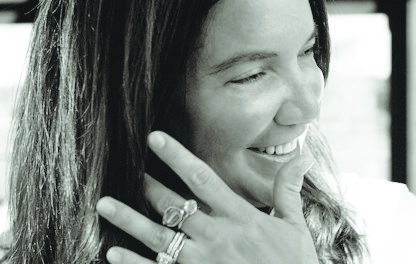Note: Here’s an oldie from August 2017. I think it’s evergreen. Unlike kudzu. – Margaret
I was out walking in my neighborhood last week, fuming about something I’d just seen on the news or the Internet or Facebook or who even knows where anymore.
I was walking and fuming, fuming and walking – my hands balled in tight little fists of frustration – probably conjuring a counter-argument to some absurd, dishonest claim I’d just heard or read – who even knows which one anymore? – when I came upon a big patch of kudzu.
Now, let me just admit something up front: I’m fond of kudzu. That confession might get me kicked out of the Society of Good Southern Folk, but it’s true. I think kudzu’s kind of mysterious and enchanting and I can’t help tipping my hat to its stubborn tenacity.
Nevertheless, kudzu is seen as a “scourge” down here, mainly because of the way it spreads like wildfire and chokes the life out of every growing thing in its path. So while I’m naturally drawn to kudzu – on account of it’s pretty – my mind knows better, and whenever I see it, I try to work up an appropriate level of disapproval.
“Damn this kudzu,” I’ll kvetch. “The vine that ate the South,” I’ll grumble. I’ll say these things to myself until I begin to believe them.
On this particular morning it was easy, since I was already ticked off at some nasty Internet troll or disingenuous TV pundit or somebody. So I’m looking at the kudzu, mustering up as much hatred as I possibly can for something so lush and attractive and lacking in moral agency, when I spot one of the most magnificent butterflies I’ve ever seen.
I’m talking about one of those butterflies that’s so enormous you think it’s a bird. The kind that seems so substantial and weighty you can’t imagine how it’s just hanging there in the air . . . can’t fathom how the atmosphere is even holding it up. This one was lemon yellow, with black markings and some tail trimmings of brilliant blue.
I stood there marveling at this unlikely creature as it hovered around the dreaded kudzu, treading air. It was oblivious to me, so I managed to snap a few pictures on my phone. With a little research, I would later discover I’d been in the presence of an Eastern Tiger Swallowtail.
(Incidentally, almost every time a butterfly knocks my socks off, it turns out to be some kind of Swallowtail.)
The butterfly eventually fluttered by and I was left, again, to my own devices – left to walk and fume, fume and walk – only now, I didn’t feel so fumy anymore. That’s the nature cure for ya. Works like a charm. This is why I take it daily, as many doses as possible.
But even the nature cure won’t switch off the brain entirely, and on this morning I found myself easing gracefully from fuming into musing. In fact, I began slipping into a mental space-time I facetiously think of as Margaret’s Moment for Metaphor.
During MMM, I am helplessly driven to interpret even the most mundane experience as a Symbol, a Message, a Life Lesson, or something equally bombastic and pompous. Almost against my will, I began thinking about the kudzu and the butterfly that way. I thought about how the whole world suddenly seems smothered by a rapidly-spreading, life-choking contagion, and yet . . . there is such beauty. Right there in that tangled morass of kudzu, a spectacular butterfly.
This got me thinking about the old adage, “Don’t miss the forest for the trees.” The point of that saying, I guess, is that if you get too caught up in the little details of life, you’ll fail to appreciate the big picture. A useful warning, I suppose, depending on the situation.
But as I walked that morning – no longer fuming, just musing – it occurred to me that maybe what the world needs now, besides love sweet love, is the opposite warning: Don’t miss the trees for the forest. Or, to update the cliche: Don’t miss the butterflies for the kudzu.
I don’t have to tell you what I mean by “kudzu,” metaphorically speaking. You live in the world. You watch the news. You know the kudzu’s spreading faster than Duke’s on white bread in tomato pickin’ season.
So fast grows the kudzu, in fact, that I can hardly write about “current affairs” in this column anymore. We only publish every two weeks, and we have a couple of days between our print deadline and our pub date – so by the time you read this, the kudzu will have spread to parts unknown, in ways I can’t even imagine as I write. To understate the obvious, the kudzu is completely out of control.
Certainly out of my control, anyway.
So I will focus on the butterflies. The “forest” may be burning, but I will cling like crazy to the trees. Not just the metaphorical trees, either, but the actual trees – each one with its singular, irreplaceable beauty. And in those trees, the birds. I will watch them closely, and with loving care. Not a sparrow will fall to the ground without my knowledge. Not if I can help it.
I’ve grown enamored, this summer, of the tiny Carolina chickadee. I’d never really noticed it before; I was all about the fancier birds – the cardinals and blue jays and pileated woodpeckers. But I bought a new feeder recently, and the chickadees have been flocking to it in droves. They tickle me to no end with their wee, spunky selves. And to think I almost missed the joy of knowing them because I just . . . didn’t see them. I may be wrong, but I think the Carolina chickadee is actually smaller than the Eastern Tiger Swallowtail.
Which brings me back to butterflies. Now, I believe, is the time to draw strength from the “butterflies” – those flashes of grace that flutter in and out of our lives like unexpected gifts from the universe. They’re everywhere, all around us, but we have to pay attention. Maybe it’s a kind word from a stranger in the grocery store . . . or the knowing smile of a friend who just read your mind. Maybe it’s the cat that jumps in your lap with perfect timing, or the baritone rumble of thunder on a scorched afternoon, or the cardinal on your windowsill, or the sound of your daughter’s voice when she calls to say she’s on her way home.
Or sometimes, it’s literally just a butterfly. But when the whole world’s drowning in kudzu, a butterfly can look a lot like a life raft.









